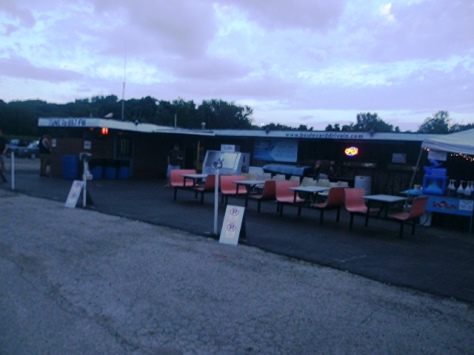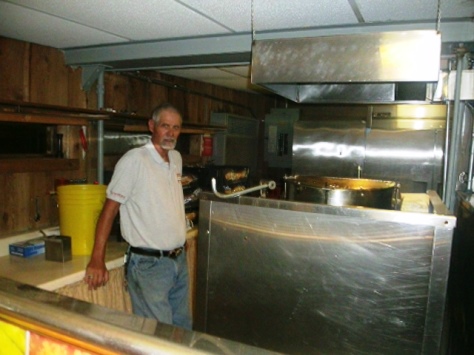by Mike Shields, KHI News Service
Topeka — Gov. Sam Brownback once called Obamacare “an abomination,” and with the federal health reform law now four years on the books bad-mouthing it has become a conservative Republican ritual.
But this week, after more than a year of planning and preparation by Kansas and federal officials, the Affordable Care Act and Brownback’s own KanCare initiative begin coming together in ways that will make the two programs indistinguishable to as many as 72,000 Kansas Medicaid beneficiaries.
Kansas officials will launch the Medicaid health homes program, which is a key but little-publicized Obamacare component, by sending letters to the thousands of potential participants informing them they will be included in it unless they opt out.
The actual services are then scheduled to begin Aug. 1.
“Lt. Gov. (Jeff) Colyer … has been very involved in this project and is very committed to it,” said Becky Ross, director of Medicaid initiatives at the Kansas Department of Health and Environment, the state’s lead Medicaid agency. “So, I think this administration is pretty supportive of it.
“It’s not a Medicaid expansion. We’re not adding more Medicaid members,” Ross said. “We’re simply trying to use this opportunity to bring some more resources to particular segments (of the Medicaid population) to make sure we get good health outcomes.”
Though federal approval of the state’s Medicaid plan amendment to enact the initiative has not yet been received, it is expected, Ross said.
More federal aid
In states that agree to adopt the system — which relies on closely managed, wraparound or integrated health services for specifically targeted, high-risk, high-cost Medicaid enrollees — the federal government will pay 90 percent of the costs for the first two years each individual is involved, versus the normal federal match to Kansas of about 57 percent.
Kansas is one of more than 25 states that have accepted the Obamacare requirements and funding, though in a way that officials say is somewhat unique because the health homes will be implemented through Medicaid managed care companies, rolled out statewide and include more target groups.
‘Fight it all the way’
“What we’ll do in Kansas is we’ll do what we’re required to do, but we’re gonna fight it all the way,” Gov. Sam Brownback said of Obamacare when he was campaigning for governor in 2010. Kansas is now among more than 25 states that have chosen to adopt Medicaid health homes, a key component of the federal reform law.
“Other states don’t have managed care programs as large as ours,” Ross said, “and so tend to operate (health homes) for populations not in managed care, or their MCOs (managed care organizations) have a minimal role.”
Ross said Iowa has a model most resembling Kansas’, but officials there only are targeting Medicaid enrollees who have serious mental illness and the services are being routed through a single health organization, Magellan.
The Kansas program will be run by the state’s three KanCare MCOs and will include not only beneficiaries with serious mental illness but eventually also those with the chronic conditions of asthma or diabetes and at risk of developing another potentially chronic malady.
“We estimate about 36,000 people are going to be eligible for the SMI (serious mental illness) health home and about 38,000 for the chronic conditions,” Ross said. “Of course, there will be some overlap.”
Ross said officials project that about 75 percent of those eligible from the two target groups would choose to stay in the program, for a total of about 55,000 Kansans. Those who opt out may remain in Medicaid.
Letters go out this week
The notification letters to those with mental illness are scheduled to go out Tuesday. Last week, KDHE officials said they also were planning to send notifications this week to those with chronic conditions. But Monday, they said they were delaying action on that until at least Jan. 1, 2015, because an adequate provider network wasn’t yet in place.
“We’re just not ready to pull the trigger yet on that part,” said Sara Belfry, an agency spokesperson. “We’ll keep working on that and re-evaluate Jan. 1.”
That is the second significant delay to the health homes program. The administration initially had planned to launch it Jan. 1 this year.
Six Core Health Home Services
• Comprehensive care management
• Care coordination and health promotion
• Comprehensive transitional care from inpatient to other settings, including appropriate follow-up
• Patient and family support.
• Referral to community and social support services if relevant.
• Use of health information technology to link services.
As of last week, 120 Medicaid service providers had submitted the information to KDHE indicating they wanted to take part in the program either as lead health home agencies or as subcontractors for the three managed care companies that run KanCare: Amerigroup, UnitedHealthcare and Sunflower Health Plan, a subsidiary of Centene.
Lead health homes agencies will be expected to provide each of six core services. Subcontractors might provide as few as one or two.
Still negotiating
Representatives of the KanCare MCOs and the various providers interested in participating in the program said they were still working through the contracting arrangements and negotiations, though that is being done with amendments to existing KanCare contracts as opposed to new legal agreements.
Among those expressing interest in participating so far are all the state’s community mental health centers and many of the Community Developmental Disability Organizations. Some centers for independent living and some doctor groups also want in the program.
Mental Illness
Any Medicaid enrollee with a diagnosis of one or more of the following conditions is eligible for the health homes program:
• Schizophrenia
• Bipolar or major depression
• Delusional disorders
• Personality disorders
• Psychosis not otherwise specified
• Obsessive-compulsive disorder
• Post-traumatic stress disorder
Chronic conditions
Any Medicaid enrollee with asthma or diabetes and at risk of the following conditions is eligible for the health homes program:
• Hypertension
• Coronary artery disease
• Depression
• Substance abuse
• Overweight
Ross said about 19 local health departments and 13 safety net clinics also have indicated they plan to participate.
“We have enough providers to cover all 105 counties,” she said, and then some, because the state is requiring that there is a choice of at least two providers in each county for Medicaid enrollees.
Already investing
Some providers, such as the Center for Counseling and Consultation in Great Bend and The Guidance Center in Leavenworth, have made significant investments in anticipation of participating in the program. Both are community mental health centers that serve multiple counties.
“We are putting a lot of effort and investing quite a bit of resources,” said Dwight Young, executive director of the center in Great Bend. “We are establishing a service that will operate under the name of Center for Health and Wellness. A couple of months ago, I went to my board and said we need to make these investments. We don’t have any signed contracts for any of this.”
Young said the center was hiring additional staff and leasing additional building space.
“We’ve probably committed $400,000 or $500,000 in the total package that we’re going to need to recoup from the services,” he said.
Young said his organization and others across the state have concluded that many of the services they have offered fit easily within the health home model, so they might as well get reimbursed for it. But exactly how this new initiative will affect their bottom lines remains to be seen.
“Most behavioral health oriented agencies tend to think, ‘Oh, we do all that anyway; we might as well get paid for it.’ But then when the rubber hits the road … we’ll have to see how all that sorts out. We’re investing in this, and we’ll see if it generates the revenues to cover those costs and we may have to make adjustments. I guess that makes us entrepreneurs now.”
‘Treatment teams’
Keith Rickard is executive director of The Guidance Center, the community mental health center that services Leavenworth, Atchison and Jefferson counties.
“We’re putting together treatment teams as we speak,” Rickard said. “We’re ready to go soon as we have contracts.”
Rickard said the initiative is potentially a big deal for the center and has already involved hiring new people. He estimated there might be as many as 2,000 Medicaid enrollees in the center’s service area that could qualify for health home services, which could lead to the center’s growth.
“This could add 10 to 25 additional staff and $1 million to $2 million in additional service activity,” he said.
Rickard said he already has a program director/medical director on board for the initiative and within the next 30 days expects to have six more people hired.
“Our goal is to reduce the inappropriate use of (hospital emergency rooms) and the higher-cost services through education and early intervention,” he said. “We’re really looking forward to this. We think it’s going to be an overall improvement for the participants and eventually will save money for the state as well.”
Cost-cutting
KDHE officials projected the program in its first two years would result in about $16.4 million in savings from reduced medical expenses, of which about $7 million would be the state’s share. And the additional federal aid would reduce state general fund expenditures by about $24 million. The state’s share of Medicaid costs is more than $1 billion a year.
Those projections, however, were built on the assumption that both target groups would be included in the program this year. KDHE officials said they hadn’t yet developed revised numbers after deciding to delay the start of the chronic conditions portion of the initiative for at least six more months.
Policy experts say there are numerous studies that show health homes can be effective in reducing costs and improving health outcomes.
Two of the state’s three KanCare contractors apparently are taking similar approaches to health homes. Representatives for UnitedHealthcare and Sunflower each said their companies are seeking lead health home partners that are willing and able to take responsibility for the six core service functions that are required by federal and state officials.
“We are in the process of doing amendments to our contracts with a little over 80 providers, all of which have the capacity to provide all six core services,” said Dr. Katherine Friedebach, chief medical director for Sunflower. “We sent them out a little over a week ago … and we hope to get executed amendments in the first week or two of July.”
Friedebach said she “was very impressed” that many of the providers were choosing to work with both targeted populations, even though many of them had more experience with one group or the other.
“We are delighted to see health care providers expanding beyond that comfort zone in a very holistic, patient-centered way,” she said.
Tim Spilker, chief executive of United’s KanCare plan, said the company was “very close” to completing health home agreements with about 25 providers “with about 10 or 15 more that will probably fall right behind that and a number of others assessing their readiness.
“We really hope that providers will take on all six services,” he said, “because we really believe that this type of care coordination is so intensive and face-to-face,” that it is best to have the primary health home providers in the same community as the patient.
Leslie Porras of Amerigroup said her company has 13 health home provider contracts already in place and has contacted each of the 120 that told the state they were interested in participating.
Different approach
Amerigroup is taking a different approach with some of the providers, particularly those that work with the developmentally disabled, and in some instances will not farm out all of the six core service functions, Porras said.
“We know that some providers may not be ready or able at this time to perform all six services,” she said in an email to KHI News Service.
That different approach has been confusing or confounding to some providers that want to provide all six.
“My hope is that they (Amerigroup) might change their mind on that,” said Sharon Spratt, chief executive of Cottonwood, Inc., a Lawrence-based nonprofit that serves the developmentally disabled. “But we don’t know yet. We do want to be a health home partner, because we do these functions already and have a lot of the systems in place.”
“We’re still in negotiations with Amerigroup,” said Rickard of The Guidance Center. “We don’t understand the offer. Until I talk with them, I can’t be critical.”
The KHI News Service is an editorially independent initiative of the Kansas Health Institute. It is supported in part by a variety of underwriters. The News Service is committed to timely, objective and in-depth coverage of health issues and the policy-making environment. More about the News Service at khi.org/newsservice or contact 785-233-5443.
www.khi.org/news





